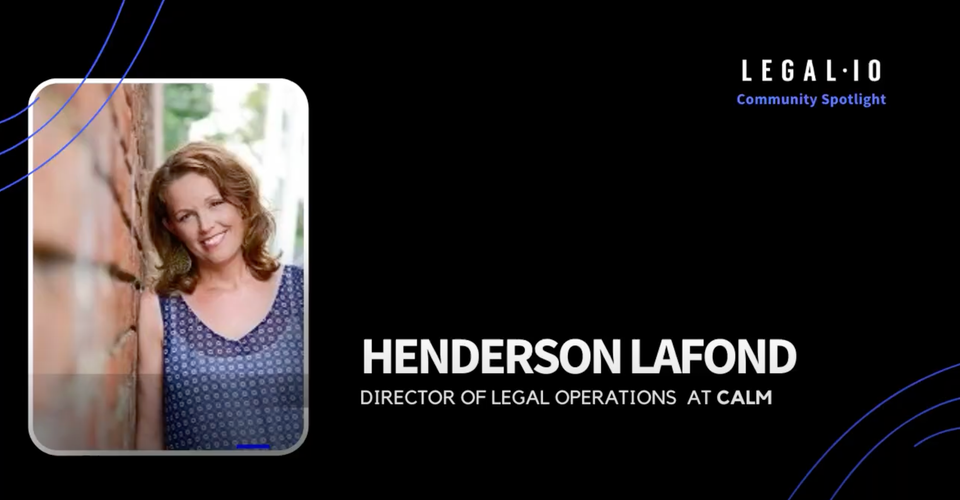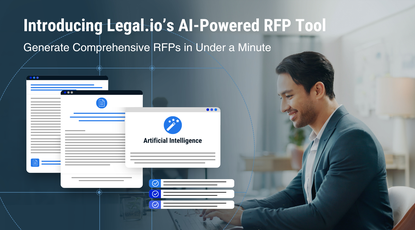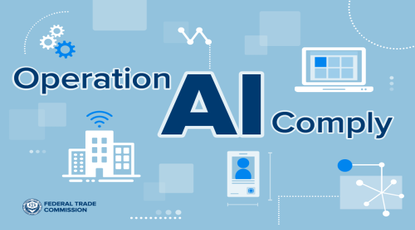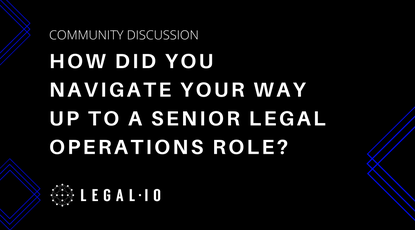Welcome to another episode of our Legal.io Community Spotlight, a series in which we highlight the careers and experiences of some of the most impressive and storied in-house legal professionals.
In this episode, we explore the career journey of Henderson Lafond, Director of Legal Operations at Calm. As Director of Legal Ops at Calm, Henderson oversees the legal department, government affairs, technology transfer (intellectual property), compliance, and internal audits. Pieter and Robyn discuss:
- Henderson's career journey to date
- Key responsibilities in her role as Dir. of Legal Ops
- Key challenges and lessons learned in her role
- The importance of cross-departmental communication so everyone can know what every part of the business is doing.
- The significance of completely understanding an issue before talking through a solution.
Three takeaways from this episode include:
- Keep a "virtual door" open for your coworkers - Henderson has worked hard to make sure the Operations and Legal teams (she has been a member of both) work in tandem with each other. It's been essential to both teams' success that they keep lines of communication open.
- Systems and processes can only be built with the present business in mind - Henderson touches on the idea of having to update contract lifecycle management process three times. It's easy to think about this as evidence of failure, but as a business grows, its' needs change, and processes will need to be changed along with that. You can only solve the problems you can see.
- With Operations, it's important to go slow at first, so you can go fast - Henderson talks about her experience with building towards operations goals and how imperative it is to make sure you understand everyone's stance on an issue before moving towards a solution. Go slow so you can go fast.
Read the full transcript for this episode below.
Pieter Gunst
Hey, everyone. My name is Pieter Gunst, and I am very excited to shine a spotlight here on the career of Henderson, lifelong Director of Legal Operations at Calm. Henderson, thank you so much for joining here.
Henderson Lafond
Thank you so much for having me. It's great to be here.
Pieter Gunst
So very excited to chat a little bit about your career journey and legal operations in particular. And I want to dive right in. And can you tell me about what's been your journey becoming the Director of Legal Operations at Calm?
Henderson Lafond
Yeah. So this is a story I really love to tell because it is very serendipitous. I had just had my second little boy back in 2017 and a founder who I had worked for previously reached out to me as she had just joined Calm as an Interim Operations Leader. And she was asking for 20 hours a week or so to help with, kind of all the things; all the GNA function things, finance, legal people. The operations team at the time was literally just her. And I think at the time, Calm maybe had one dozen employees. So it was a very small place.
I knew very little about the company, but had used the app previously, so I was very excited to dive in.
A year later, I think it was, I converted to a Full-time Operations Manager, really focusing on those same three functions; so finance, legal and people. And then at right around 18 months ago, I was given the opportunity to build our Legal Operations function and jumped at the chance.
It has been such an incredible experience learning and growing for me, and it's really pushed me to continue to sharpen my skills as a leader and continue to explore and learn more about this really interesting field of Legal Operations.
Pieter Gunst
Yeah, that's fascinating. So you started kind of doing flex work like a contract engagement and this was general operations. And then you became a specialist within a growing organization on the legal side.
Well, all right. So Legal Operations. Now, in that role, what are some of the things that are on your list of key responsibilities? What does a day look like for you now?
Henderson Lafond
So I would say the first and most important responsibility that I have is to be a resource and support to the people. Both on my very small but mighty legal operations team of two, and the attorneys on our team. So I really try to make sure that they know my virtual door is always open to ask questions, lend a hand or be a sounding board.
The same also holds true for those outside of the legal team. And it's important, I think, across the board, many people can relate to the desire for legal to be seen as a resource and an enabler instead of a blocker. So really want to maintain those relationships and have those conversations as people need to to reach out to us.
Other key responsibilities on my plate day-to-day include; managing our contract lifecycle management process, I oversee our corporate governance tracking, and reporting our teams metrics. Focusing on spend within our team, as well, is another key area. And last but not least, management of our equity at Calm.
As a team of two, we are managing lots of projects at any given time, so I want to make sure that we're always delivering on our objectives and communicating cross-functionally, so that people know what we're doing when they can expect work and replies back from us. So communication is really key and critical for us.
Pieter Gunst
Right. Change management and as a big part of their role there as well.
Henderson Lafond
Absolutely. Absolutely. That's one thing that is never changing is the change. There's always something new to manage and every day bring something new to the table.
Pieter Gunst
So you spoke about the early stages of the organization. The team is now more than 500 people?
Henderson Lafond
We're right around 350.
Pieter Gunst
350, right. It's still like a significant expansion of the team.
Henderson Lafond
Absolutely.
Pieter Gunst
Now, on your journey there, what's been maybe a key challenge that you've encountered along the way? And what did you learn from it? Or what were you able to bring from previous experiences?
Henderson Lafond
That's a really great question. One of the examples that I think of is probably around our contract lifecycle management process, which I talked about a little bit earlier. If I'm being honest, this is a project that I have scoped and managed at Calm three separate times. Because as the company scaled and took on new directions and started to explore different areas, the needs changed and evolved. So, while at times it felt a bit discouraging each time we kicked this project off because, you know, you can quite easily convince yourself that the previous versions of the lifecycle management process weren't built to last and were therefore failures. Reflecting back on that now, I can definitely see where all of those iterations were critical to getting us to the process that we're using today, which is significantly more robust, serves our needs really well and also is at the point where it can scale along with us.
Pieter Gunst
Yeah, fascinating. And I'll say that contract lifecycle management, just because of its importance to the revenue generation of most organizations, is proving such an interesting implementation challenge for orgs.
Henderson Lafond
Absolutely. And for us, it's really [that] we were solving a problem initially that we could see. Which was, you know, creation of content requires a lot of different contracts; everything from the person that writes it to the person who narrates it in the case of our sleep stories or meditations. So we were very much solving that problem. As Calm continued to scale and transitioned into enterprise and business to business sales, we had a whole different set of problems to solve. And so it's been really interesting to follow along that journey and see, you know, ‘how can we meet the business where it is and serve them in the best way possible’?
Pieter Gunst
Right. Yeah, that's fascinating, of course, because you've run a media publishing company, but then you have all these other relationships and you could see how requirements would shift very rapidly in an environment like that.
Henderson Lafond
Absolutely. Absolutely.
Pieter Gunst
Now, talking about operating efficiently in an environment like that. That's a lot about building strong relationships. And so you told this story of coming in early in the ops function and then legal operations becoming a ‘thing’ during that journey. And so you have this legal department that's also serving this like organization that really became a major brand. Right? And in the marketplace. - What did you have to do to make sure that you had strong relationships with that team and that you guys were able to coordinate and act efficiently together?
Henderson Lafond
It's a great question as well. So I think the key for us has been really making sure that we understand what our stakeholders want and expect from us. So, in the case of evaluating a process or tackling a new project internally or externally really taking a beat and documenting: What is the current state? How are things happening? What's the flow? Where are the bottlenecks? Where are the problems and pain points? And understanding both from the stakeholders perspective and from our expected perspective: What are we trying to solve for here?
That evaluation piece is so important and I think it almost requires us to slow down sometimes when, you know, the alternative, maybe what your desiring is like, “We just need to go, go, go”. Especially in the world of start ups where, you know, slowing down is often seen as not a good thing. That evaluation piece is so important for us, because it makes us really take a deep look at everything and not just focus on the things that I believe to be the problem or I believe to be the issue, either based on my own observations or hearsay. So we really want to take everyone's feedback, listen to it, take it under consideration, and then come up with a tool or process or way of doing things that people across the organization will be excited to use.
One of the things that is the most discouraging when you roll out something new is finding out that people are not going to use it because it's either; not solving the problem, it's too cumbersome, or it slows them down. So, you know, I like to say that when people come to Operations, whether it's General Operations, Legal Operations, that's like hitting the fast lane. You might have to go slow initially as you're getting into the lane, but after you’re in the lane, you should be able to scoot. And that's really by virtue of the fact that you're listening to folks understanding what they want and need from you and then addressing those wants and needs.
Pieter Gunst
Right. Yeah. Fascinating to apply that lens to the problem. And it's almost like - because when you're a building and legal operations department, that's a startup within a startup.
Henderson Lafond
Exactly.
Pieter Gunst
And every startup founder will wave the handbook and say, “We’ve got to do our need finding!”, “We’ve got to test our problems!”. “We can't build too fast”. But both from the legal perspective and from kind of an entrepreneurial perspective, it's a huge trap. And it's so easy to give the advice, but it's really hard to execute on it. And really do you understand what is happening and what the best solution is?
Henderson Lafond
Yeah, that's exactly right. And the best solution today - I mean kind of going back to the challenge question - may not be the best solution tomorrow. So being humble enough to say, “We did the work, we know what we need now and we're going to evolve from that” is another thing I think, that has helped build a relationship and build credibility for our team across the organization too.
Pieter Gunst
Right. One topic I was discussing with Hannah, one of the founders of the company as well, is how do you build processes that have longevity. Like the cost of running a process versus how automatically can it run. Will it last for three [to] five years? Like can you eliminate manual steps that are not going to scale over time and really build things that can last? And it really requires that you understand your problem very meticulously, otherwise you simply cannot get there.
Henderson Lafond
Yeah. And the process itself, too, I think it's important that the process you build be nimble enough to evolve as well, if needed. So that you should be able to go back and take a look at that and make minor tweaks, so that it serves the needs of the business in that moment. Without tearing the whole thing apart and trying to build it back up again.
Pieter Gunst
Right. Yeah. We already have so many tools in our toolbox as well. Right.
Henderson Lafond
Absolutely.
Pieter Gunst
Yeah, Super fascinating. Well, Henderson, I really appreciate you sharing some of your journey and insights on how to build strong teams, how to communicate well. Thank you so much for spending some time with us.
Henderson Lafond
Thank you so much. Really appreciate it.










